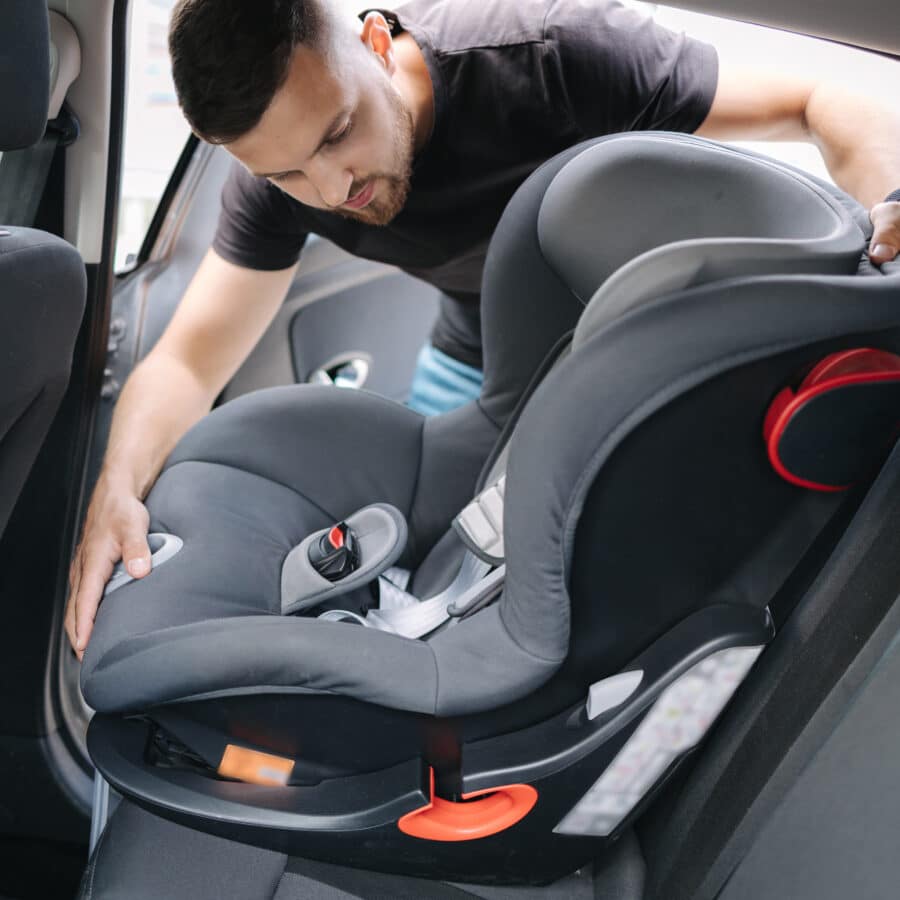Besides the obvious danger of defective car seats that may fail during a crash, other less apparent risks exist. These include improper child restraint use, faulty installation, and even — believe it or not — toxic chemicals.
The NHTSA explains in a 2008 traffic safety fact sheet that motor vehicle accidents were the leading cause of death for children ages 3 to 14. Last year, the automotive safety agency responded by updating their child restraint guidelines in order to help curb this trend.
The new child restraint guidelines called for categorization “by age rather than by type of child seat in order to keep pace with the latest scientific and medical research and the development of new child restraint technologies.” The NHTSA explains that parents should also select car seats for their children based on their height and weight to ensure a proper fit.
These new guidelines also advise parents to keep children “in each restraint type, including rear-facing, forward-facing and booster seats, for as long as possible before moving them up to the next type of seat.” One of the greatest risks to children is when they are moved to a new safety device too soon, particularly forward-facing car seats.
The Mayo Clinic explains that children should continue riding in a rear-facing position until about age 2, or until the child reaches the highest weight or height recommended for the car seat model. Other common mistakes the Mayo clinic warns parents to avoid include:
- Dressing children in bulky outerwear that can reduce the protection of harness straps
- Moving to booster seats too soon
- Moving to safety belts too soon
- Getting a used seat without determining its age, condition, and whether it was ever recalled
- Placing the car seat in the wrong position or spot in the car
- Using car seats as cribs
Though choosing the correct restraint for a child is vital, another NHTSA document explains that correct installation and securing of the child is also an essential element of making sure children are safe in vehicles. The Centers for Disease Control (CDC) reports that “One study found that 72% of nearly 3,500 observed car and booster seats were misused in a way that could be expected to increase a child’s risk of injury during a crash.”
While improper car seat use represents one of the greatest safety concerns facing parents, another surprising risk has been identified. Last year MSN Health reported that many chemicals, including “lead, flame retardants, and toxic plastics,” are present in child restraint devices and can “interfere with their developing lungs, brains, and reproductive systems.”
This overlooked car seat risk was exposed by a study carried out by the Ecology Center, a nonprofit consumer environmental organization. According to their study results, 60 percent of the child seats tested contained at least one of the unsafe chemicals tested for, with flame retardant chemicals being the most common.
The study authors were careful to point out that this should not deter parents from using car seats. However, they did make several recommendations to reduce the risk of infant chemical absorption. These recommendations include the following safety measures:
- Don’t let infants nap in car seats and prolong chemical exposure;
- Vacuum vehicles frequently to remove dangerous chemical dust; and
- Keep car seats out of direct UV rays and heat, both of which help break down chemicals faster and allow them to enter the body.
Major car seat recalls, like last month’s recall of 14,220 Britax infant car seats, tend to overshadow these additional hazards. Although parents can register their car seats with the NHTSA in order to learn of a recall immediately, no such safety measure exists for parents who continue to incorrectly strap their children into chemical-laden seats.
Despite an abundance of online tutorials which explain how to correctly safeguard children during car trips, parents may not even realize they are securing their children incorrectly or using dangerous products. Unfortunately, parents who fail to choose the appropriate car seat often do not learn of the problem until it is too late.


